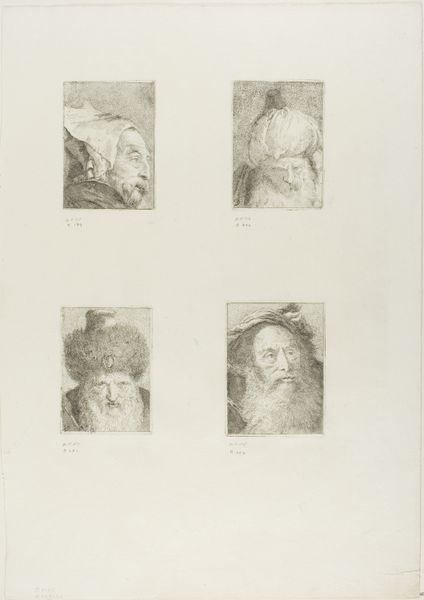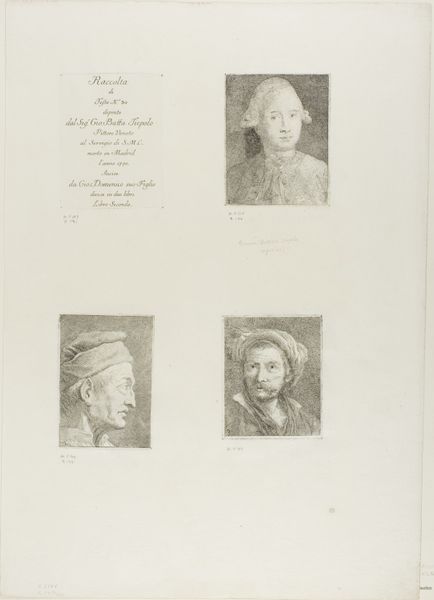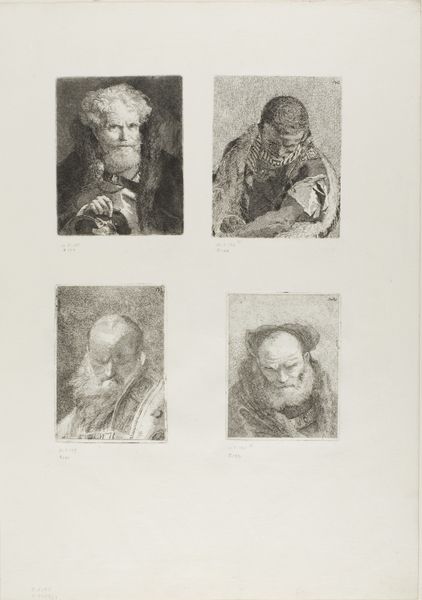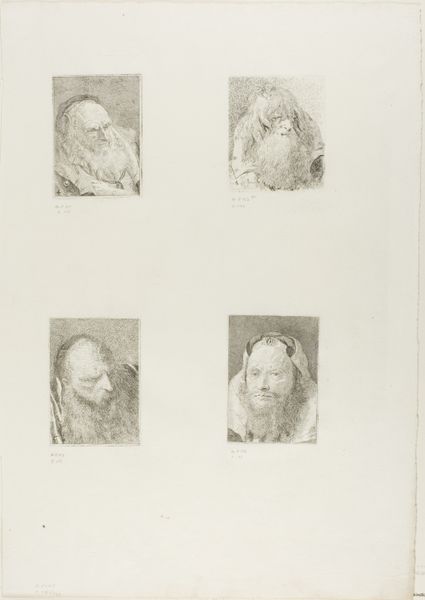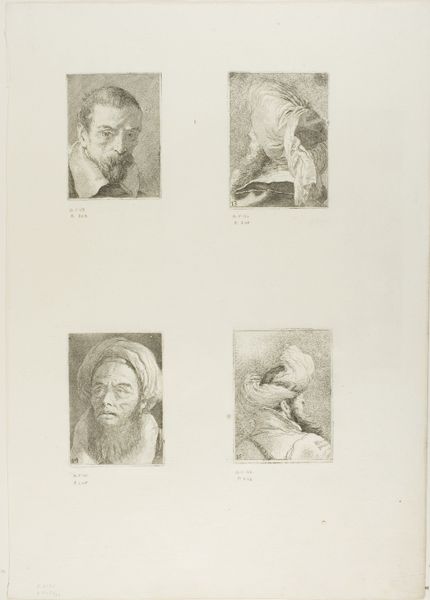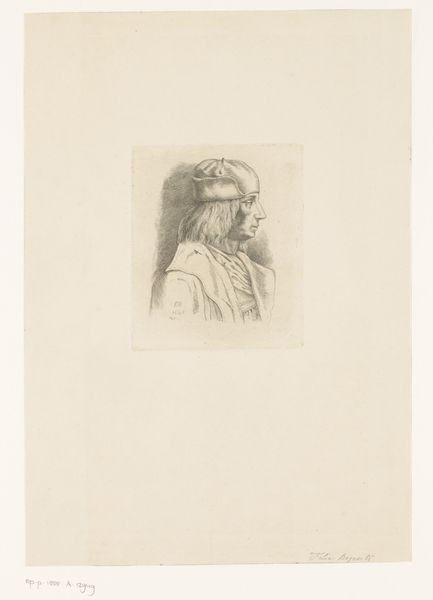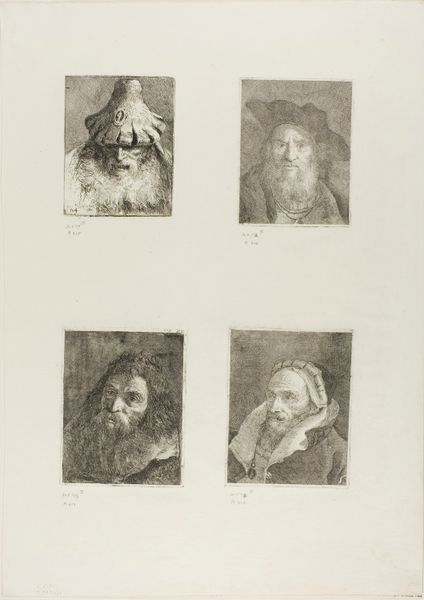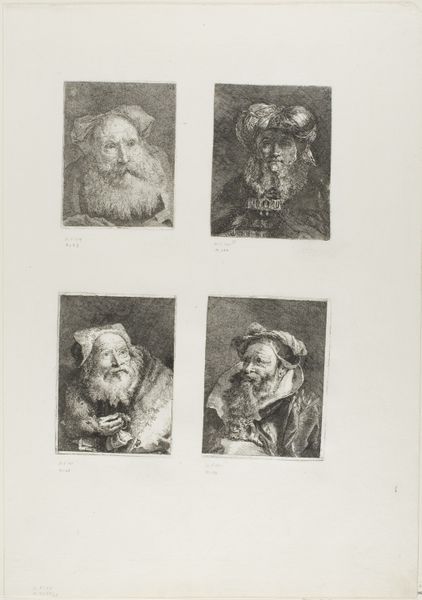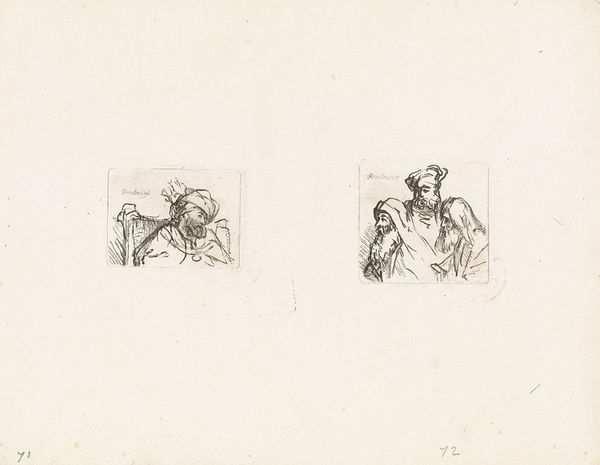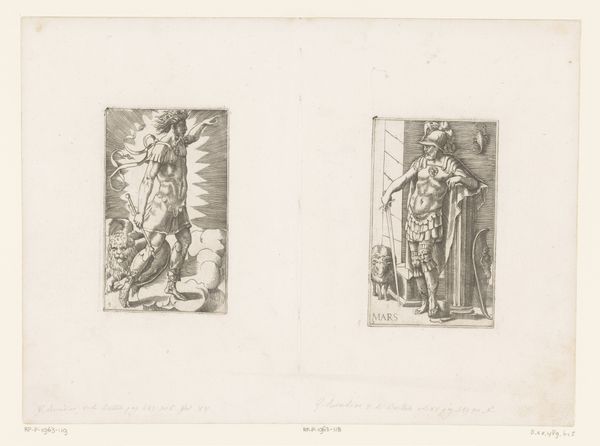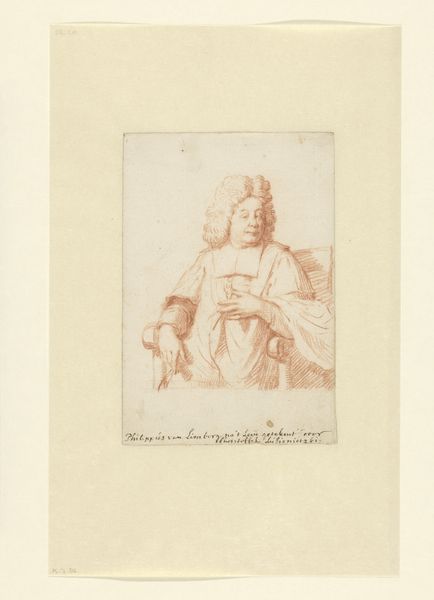
Turk Seen from Behind, Three-Quarter View of an Old Man with a Beard, Bearded Old Man with a Hat, Profile of an Old Man with a Hat 1775
0:00
0:00
drawing, print, etching, paper, pencil
#
portrait
#
pencil drawn
#
drawing
# print
#
etching
#
charcoal drawing
#
paper
#
pencil drawing
#
pencil
#
academic-art
Dimensions: 117 × 78 mm (image, upper left); 122 × 82 mm (plate, upper left); 122 × 90 mm (image, upper right); 124 × 92 mm (plate, upper right); 123 × 89 mm (image, lower left); 126 × 94 mm (plate, lower left); 132 × 90 mm (image, lower right); 125 × 92 mm (plate, lower right); 545 × 387 mm (sheet)
Copyright: Public Domain
Curator: What strikes me immediately are these ghostly, almost translucent figures. They possess an ethereality that makes them feel like fleeting memories. Editor: Indeed. The artwork before us, attributed to Giovanni Domenico Tiepolo from around 1775, presents us with four studies in etching and pencil on paper, all studies of elderly men, their identities, their lives rendered somewhat enigmatic. Curator: Enigmatic is right. The figures seem to emerge from a mist of paper and ink, particularly the bearded old man with the tall hat; its very indistinct and yet there’s still an expressive quality in his eyes. I wonder what symbolic weight headgear, like turbans, carried at this time? Were these studies meant to capture a certain exoticism in Venetian society? Editor: Most likely. Turbans and hats can signify so many things across cultures: status, religious affiliation, sometimes even simply practicality, or perhaps fashionable statements. This period in Venice had become known for theatrical display in the grand social theatre the city offered to residents and visiting tourists alike. There’s clearly a sense of otherness, perhaps even orientalism at play here. Curator: I'm interested in how Tiepolo frames these men. Each figure seems isolated, contained within its own little rectangle. Almost like specimens under glass, studied and categorized. This practice aligns perfectly with the 18th-century intellectual movement, eager to dissect and catalog. What can we infer about the socio-cultural lens through which Tiepolo viewed his subjects, and his likely patron-audience? Editor: Fascinating observation! Their containment hints at the detached, analytical eye gaining prominence during the Enlightenment era. It’s like pinning a butterfly for scientific display. Yet, paradoxically, despite this air of detached observation, there remains something genuinely human in the depiction. The folds and shadows etched and drawn into faces heavy with age, the very careful detail around the nose or beard of the man to the left and above. It hints at the universal human condition beneath. Curator: A poignant intersection, where science attempts to quantify humanity, and art still breathes empathy into it. What is so striking about these works is the economy of detail with the intense character Tiepolo infuses in these elderly subjects. The image remains a testament to how artistic interpretations evolve. Editor: Precisely. And while the specific identities of these men may be lost to time, the emotions and ideas they evoke still resonate, allowing us to continue finding meaning within these remarkable sketches today.
Comments
No comments
Be the first to comment and join the conversation on the ultimate creative platform.
